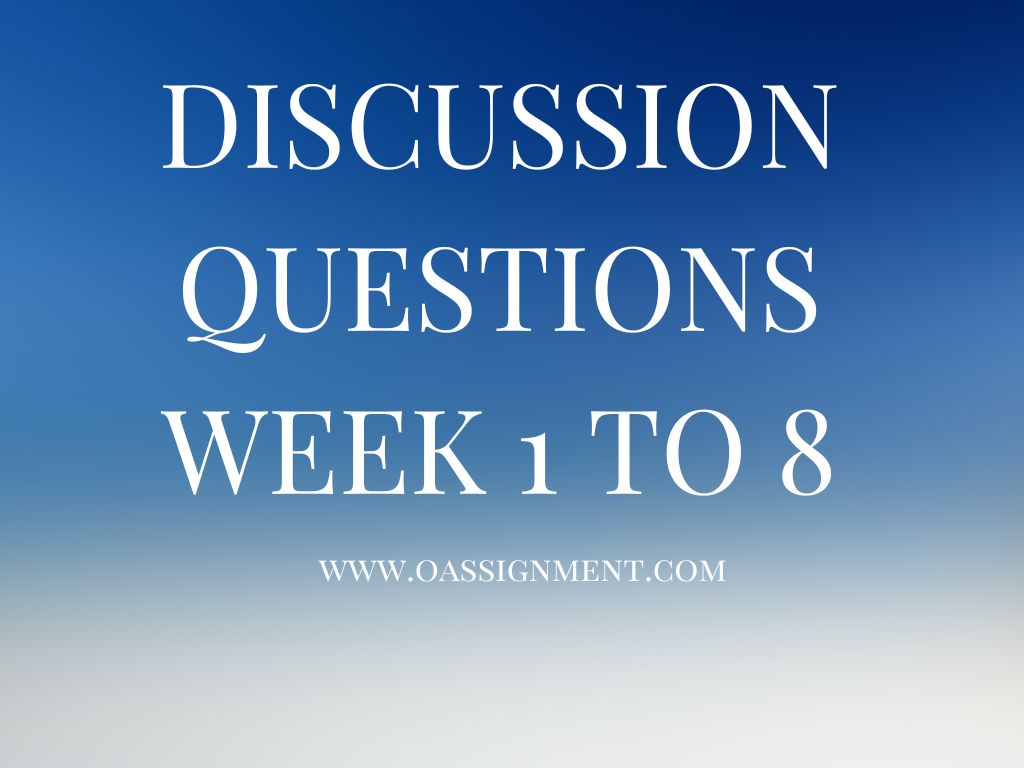Description
ENG 356 Week 1 Topic 1 Discussion 1
We read about critical reading in Reading and Writing about Literature. How does one apply critical reading to short fiction and to short nonfiction pieces? Discuss two differences in approach and application of critical reading skills.
ENG 356 Week 1 Topic 1 Discussion 2
Apply the seven elements of fiction as outlined in chapter 5 of Reading and Writing About Literature to Edgar Allen Poe’s review, “The Importance of the Single Effect in a Prose Tale.” Determine whether or not Poe addressed all seven elements or if not, what do you see as lacking in his review?
ENG 356 Week 2 TOPIC 2 DISCUSSION 1
Analyze Poe’s use of suspense in “The Cask of Amontillado” and “Ligeia.” What narrative devices does Poe use, in both stories, to heighten the suspense? What do these stories suggest about the human spirit and condition?
ENG 356 Week 2 Topic 2 Discussion 2
An allegory is a narrative that has an extended dual meaning. One meaning resides in the literal action and plot of the story and another meaning, just as significant, resides in the ideas, values, or messages these actions are intended to convey. Nathaniel Hawthorne’s “Young Goodman Brown” is interesting both on its surface level of action and plot on its deeper, more symbolic level. Notice how the central characters of “Goodman” (a generic Puritan term meaning “gentleman”) and “Faith” represent abstract qualities. How does this story, with its emphasis on the dark undercurrent of evil in this seemingly tranquil New England town, function as a moral allegory?
ENG 356 Week 3 TOPIC 3 DISCUSSION 1
Discuss the relationship between the central character (protagonist) and the natural world in Stephen Crane’s “The Open Boat.” What does this character learn about himself and about his environment through his encounters with the natural world? Based upon this famous example of literary naturalism, how would you define the naturalistic view of humanity’s relationship with the physical world?
ENG 356 Week 3 Topic 3 Discussion 2
Write a short critique about Charlotte Perkins Gilman’s “The Yellow Wallpaper.” Address the assumptions: “literary texts mirror gender and societal attitudes about gender” and “oppression of women as a historical fact.”
ENG 356 Week 4 TOPIC 4 DISCUSSION 1
In literary criticism, the word “epiphany” refers to a moment in which a character experiences a sudden. Life-changing revelation about the true nature of something (often this can be an aspect of his or her character). These moments of insight are usually prompted by something seemingly trivial or commonplace, but they result in a radical change of perception on the part of the character. Consider either James Joyce’s “Araby” or “The Dead” and explain how the central character in either of these stories experiences an epiphanic moment. What does the protagonist learn about himself, about another person, or about life, and how does this experience and gained insight change him?
ENG 356 Week 4 Topic 4 Discussion 2
In Katherine Mansfield’s short story “Bliss,” does the character Bertha truly have “everything” as she insists? Explain and then share at least three significant details in the story that reveal aspects of Bertha’s character and life to you
ENG 356 Week 5 Topic 5 Discussion 1
Apply the elements of regional fiction (dialect; authentic speech patterns; regional diction; specific, concrete imagery; and specific, regional settings) to the Richard Wright story, “The Man Who Was Almost a Man.” Provide one example of each of the elements.
ENG 356 Week 5 Topic 5 Discussion 2
Thinking about the categories of local color and regional fiction, how would you say that Zora Neale Hurston’s “Spunk” reflects the qualities found in the two categories? Give three specific examples from the story.
ENG 356 Week 6 Topic 6 Discussion 1
In Grace Paley’s “A Conversation with my Father,” both the narrator and her father have specific conceptions of truth. Describe both characters’ conceptions of truth and discuss what comment the story seems to make about these versions of truth. Does the story itself seem to privilege one conception over the other? Explain.
ENG 356 Week 6 Topic 6 Discussion 2
In Raymond Carver’s essay, “On Writing,” (in “The Story and its Writer”) he states: “too often ‘experimentation’ [in writing] is a license… to try to brutalize or alienate the reader. Too often such writing gives us no news of the world, or else describes a desert landscape and that’s all. A few dunes and lizards here and there, but no people. A place uninhabited by anything recognizably human, a place of interest only to a few scientific specialists.” What extent does this critique of some forms of Postmodern fiction, those in which the authors are apparently more concerned with linguistic innovation than with conveying anything seemingly real or significant to a reader, apply to the fiction assigned in the Topic 6 Readings? Choose two of the assigned readings and explain why this critique does or does not apply to these works.
ENG 356 Week 7 Topic 7 Discussion 1
In Tan’s “Two Kinds,” how typical is Tan’s depiction of the mother-daughter, or generational, conflict? Is the story meant to be primarily about the Asian-American experience or is it meant to be more universal?
ENG 356 Week 7 Topic 7 Discussion 2
Compare and contrast the mother-daughter relationship in Tillie Olsen’s “I Stand Here Ironing” and Amy Tan’s “Two Kinds”. The mother narrates Olsen’s story, while the daughter narrates Tan’s. How are these two relationships similar and different? How does the depiction of these relationships contribute to the stories’ themes?
ENG 356 Week 8 Topic 8 Discussion 1
In “Madman,” what evidence supports Chinua Achebe’s view that there are different forms and degrees of “madness?”
ENG 356 Week 8 Topic 8 Discussion 2
Gabriel Garcia Marquez’s story, “A Very Old Man with Enormous Wings,” blends magical realism with a simple, straightforward style of writing. In the story, Marquez incorporates satire, irony, and humor, while also addressing serious and somewhat dark themes and topics. Choose two or three key elements of Marquez’s style (humor, magical realism, irony, satire, metaphor, etc.). How do these literary techniques help him to convey the story’s possible central theme or message?


